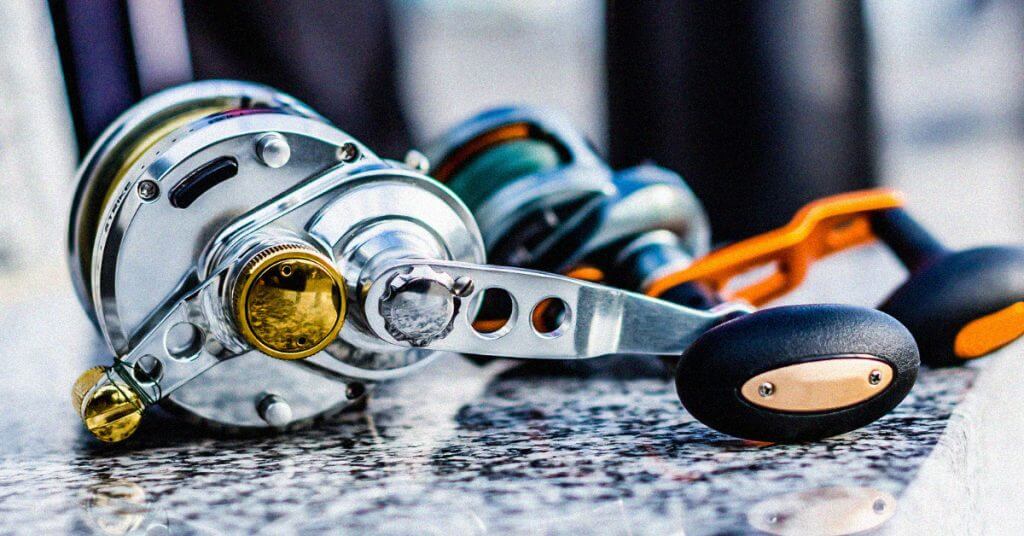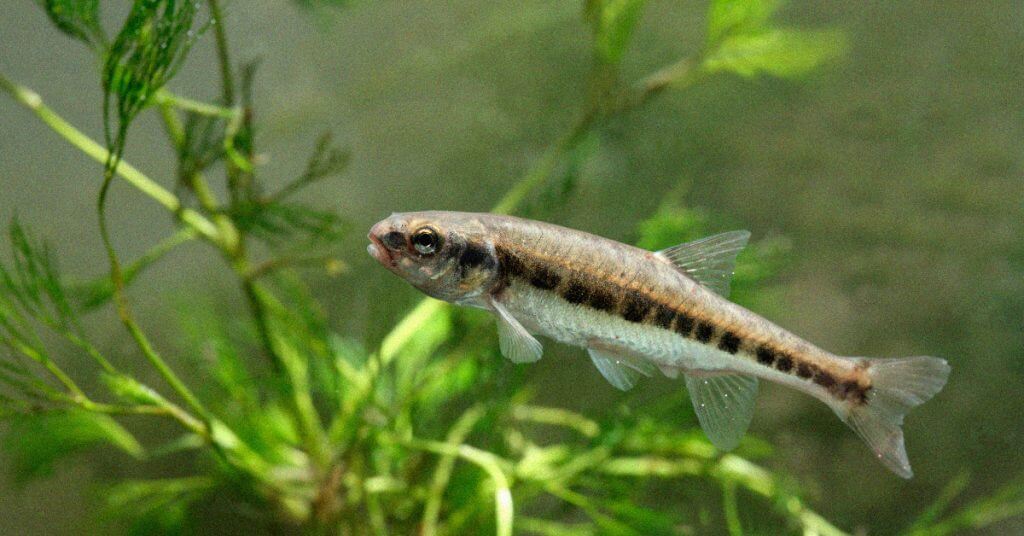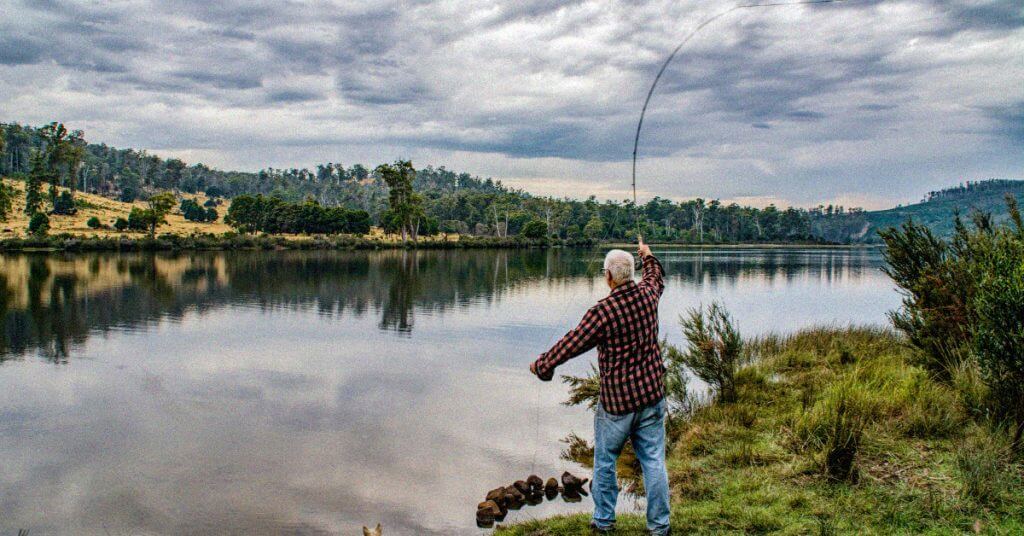America’s waters hold a diverse family of black bass, each with its own remarkable characteristics and preferred habitats. Drawing from extensive research and experience, here’s my ultimate guide for finding and identifying every variety.
Last updated: January 6th, 2025

Alabama Bass
The Alabama bass (Micropterus henshallii) originated in Alabama and Georgia’s Mobile River basin, later spreading through Mississippi. I’ve seen them in various states now – from California to North Carolina, Tennessee, Virginia, and Texas.
Though historically classified as spotted bass, they became their own species in 2008.
You can identify them by their lateral blotches, which stay separate and don’t touch the dorsal fin – unlike spotted bass spots which do reach the dorsal fin.
Another key identifier is their jaw, which ends straight down from the center of their eye, different from the larger-jawed largemouth. They also typically have a tooth patch on their tongue.
In some areas like Virginia, Alabama bass are considered invasive. From what I’ve observed, they’re aggressive competitors that out-compete largemouth and smallmouth bass for food.
They also breed with smallmouth and spotted bass, which affects those local populations.
Florida Bass
The Florida bass got its name from its origins in the Suwannee River, where it thrives throughout Florida and Georgia. Though it’s been around for generations, it only received its distinct species name in 2002.
Currently, the American Fisheries Society still categorizes it within the largemouth black bass family.
Thanks to their impressive size potential, Florida bass have been introduced worldwide – everywhere except Antarctica. These trophy fish tend to live longer than regular largemouth bass, allowing them to reach larger sizes.
In fact, many fisheries actively encourage breeding between largemouth and Florida bass to produce bigger fish.
One challenge I’ve encountered: Florida bass are incredibly difficult to differentiate from largemouth bass, so a genetic analysis is recommended if you truly need to find out what you caught.
Guadalupe Bass
The Guadalupe Bass, with its greenish-gray coloring, is a true Texas native. You’ll find this specialized black bass in the Brazos, Guadalupe, San Antonio, and Colorado rivers.
Unlike their larger cousins, these compact fish are perfectly adapted to smaller, fast-flowing rivers, where they navigate rapids and hide among rocks and brush.
The Guadalupe bass (Micropterus treculii) has some distinct features: a tooth patch on the tongue, an upper jaw that stops before the eye’s center, and softer dorsal fins. Their coloring extends to their belly, and they sport a unique diamond pattern along their sides.
While they rarely exceed 3 pounds, 11 ounces, these fish offer a special challenge.
The population is currently at risk due to smallmouth black bass stocking in their rivers. However, there are no minimum length limits on this fish.
For a unique Texas fishing experience, I’d recommend heading to a small river on the Edwards Plateau – it’s where these specialists truly shine.
Largemouth Bass
The largemouth bass (Micropterus salmoides) is the heavyweight champion of black bass. These fish typically live 8 to 14 years, giving them time to reach impressive sizes – some even growing beyond 35 inches, though that’s rare.
You’ll find largemouth bass across a vast range: from the St. Lawrence River in the Northern US, through the Great Lakes, down the Mississippi, and throughout lakes in the East Coast and Midwest.
Unlike other black bass species, largemouth prefer clearer lakes and ponds. Adult largemouth will strike at fish, crayfish, and frogs, making them responsive to various baits and lures.
Their fighting spirit and clever nature have helped turn bass fishing into a multi-billion-dollar industry.
Redeye Bass
Native to the southeastern US, Redeye bass are clearly distinguished by their – you guessed it – red eyes. Their red-tinged fins and the dark spot on their gill cover make them one of the easier bass species to identify when you actually find one.
The Redeye bass (Micropterus coosae) have a reputation for being a master of hide-and-seek. I’ve found them tucked away in shaded areas along cliffs, banks, inlets, or sunken objects, where they enjoy calmer waters.
While they’ll occasionally take worms and minnows, these fish primarily feed on insects. Most Redeye bass run between six and twelve inches, and anything over a foot is a prized fish.
Shoal Bass
The olive-bronze shimmer of a Shoal bass can be found in their native waters of the Chattahoochee and Flint rivers of Alabama and Georgia, as well as Florida’s Chipola and Apalachicola Rivers.
These fish typically measure between one and two feet long. While they share the red eyes of their cousin, the Redeye bass, I’ve noticed they lack the signature brick-red fins.
Instead, they’re distinguished by vertical, tiger-like stripes above their midline, rather than the dark lateral line you’d see on a largemouth.
Shoal bass are known for putting up an impressive fight.
While Florida’s state record stands at 5.2 pounds, even a two-pounder will earn you state recognition – trust me, they’re worth pursuing.
Smallmouth Bass

Unlike other bass species, the smallmouth bass has a continuous dorsal fin without a break. They rarely grow over 18 inches and most are under six inches long.
Known affectionately as ‘smallies’ or ‘bronzebacks’, these fish are a bit more jumpy and feisty than their larger varieties.
I’ve watched them leap and zigzag in more transparent water than largemouth bass, often in open and deeper waters. The bigger ones typically stake out territory in strong currents or deep, rocky areas.
Tip: while smallmouth will hit almost any bait, they’re sharp-eyed and spook easily. Keep your line light and presentation natural.
Once you hook into one of these fighters, you’ll understand why so many anglers specifically target them.
Spotted Bass
Spotted bass might not get as much attention as largemouth and smallmouth, but they’re worth knowing about. While their coloring mimics a largemouth, I always check the mouth first – if it doesn’t extend past the eye, you’re likely holding a spotted bass.
The spotted bass (Micropterus punctulatus) typically measures between 6 and 16 inches, depending on age.
They’ve spread quite a distance from their original Mississippi River range, now found through Ohio, West Virginia, Kansas, and down to the Gulf of Mexico, Guadalupe, and Choctawhatchee River.
One interesting thing I’ve read: when spotted bass share waters with smallmouth bass, they often interbreed, which can reduce the pure smallmouth population.
Suwannee Bass
A striking turquoise shimmer sets the Suwannee bass apart, making it a remarkable catch for those who venture to find it. You’ll need to head to the Florida-Georgia line, where these fish hang around rocky, shallow spots in smaller streams and ponds, often hunting for crayfish.
If you’re trophy hunting, hope for landing the females – they grow faster and bigger than males, reaching up to 16.5 inches. To put that in perspective, Florida’s state record weighed in at 3.89 pounds.
One distinctive feature that helps identify Suwannee bass is that, unlike most bass species, they have teeth on their tongue.
Additional Black Bass Species To Consider

The nine species above are the most recognized species of bass by anglers, biologists, and other scientists. But, bass enthusiasts will tell you about other subspecies well worth seeking out, especially in the southwest US.
While many anglers mention the Papuan black bass, it’s actually a snapper, so I haven’t covered it. But these other bass are true to this species and incredible sport fish as well.
Cahaba Bass
Found solely near Birmingham, Alabama, Cahaba Bass live in the Cahaba River and its tributaries. The Cahaba River boasts the most diverse ecosystem for a river its size. It is classified as one of eight “Hotspots of Biodiversity” by the World Wildlife Fund and the Nature Conservancy.
Usually tucked into small streams with plenty of cover, these Cahaba bass have red eyes and dusty green coloring with dark spots on their upper half.
They are currently part of the redeye bass classification as they share most traits, but many are working on getting them their own designation.
Chattahoochee Bass
Another redeye relative, the Chattahoochee Bass, is perhaps one of the most beautiful fish you could catch. With bright-orange tipped second dorsal, caudal, and anal fins, these fish will catch your eye – if you can catch them.
Growing between 5 and 12 inches long, these fish are usually found in the fast-flowing parts of the Chattahoochee River in Georgia. Downstream of Helen and above Lake Lanier are popular spots.
While some nearby streams have these bass, they have often interbred with other bass species and are not considered real Chattahoochee Bass.
Choctaw Bass
Choctaw bass were first noticed as different from its spotted and Alabama bass cousins in 2007. But, they were not given their own species designation until 2013. But, the Choctaw bass is definitely the newest player in the fishing game.
Found in Florida’s panhandle, southern Alabama, and potentially southern Mississippi, these bass are only differentiated by counting scales and gill rakers or genetic testing. Usually, along calm rivers, Choctaw bass will only be caught by those who seek them out.
Tallapoosa Bass
A darker bass, the Tallapoosa is well sought after in Georgia. Sometimes speckled with iridescent blues, catching one of these will make any angler’s day. They average between 5 and 16 inches long, they stand out from other bass with a green-yellow coloring on their second dorsal, caudal, and anal fins that are topped off with white edges.
To find these fish, you’ll have to head to the Tallapoosa River. Most anglers go to the Dub Denman Canoe Trail due to its easy access points and abundance of them. Once you’re there, fish for them in high-flowing water near rocks, wood, and banks.
Like most other Georgia redeye variations, these are smaller fish and will go after smaller flies. Usually, anglers choose small jigs, minnows, 4” worms, or grubs. Some have had success with crayfish crankbait and small cork poppers, too.
Warrior Bass
Another southern bass, the Warrior bass finds its home in western-central Alabama, throughout the Black Warrior River system. Usually found in smaller, covered streams, these fish have the same redeye and dusky blotches along their body as many others nearby.
Most people still classify Warrior bass with redeye bass, but you should be able to know you have a Warrior on the line based on your location in the river system.
What is a Black Bass?

Part of the sunfish family, black bass are a famous group of fish known for being tasty and fun to catch. Native to the Eastern United States, these game fish have been introduced all around the world and are the focus of many international tournaments in search of the biggest bass.
According to the 2016 National Survey of Fishing, Hunting, and Wildlife-Associated Recreation, black bass are the most fished species in the US. 9.6 million anglers catch them per year and spend 117 million days out on freshwater lakes.
The two most common types of black bass fishing are for largemouth and smallmouth, although there are numerous other varieties. Although these fish have a single dorsal fin like other sunfish, they can be distinguished from their relatives by their elongated body and more subtle coloring.
Their weight also sets them apart, though. The largest bass ever caught in the US is George Perry’s 22-pound, 4-ounce largemouth in Lake Montgomery, Georgia. While some fish of this species can grow up to 31 inches in length, it is much more common to find them under two feet in length.
All these bass belong to the Micropterus species. But, there is a bit of variety within this category.
Black Bass Capital of the World: Georgia
The last few additional bass on this list are all located in the southeast, and that is not a coincidence. One of the most biodiverse spots in the world, these states are incredible for fishing, and Georgia is at the top.
Known as the capital of black bass, Georgia is proud of its nickname. It hosts the Georgia Bass Slam, which encourages anglers to catch five different species throughout the state in a year.
If you’re hoping to go on any bass slam, you’ll want to get just the right rigs for doing so. Once you have caught and submitted all proof, you can get stickers, website recognition, a personal certificate, passes to the Go Fish Education Center, and, of course, bragging rights.
Anglers have to catch five of the following species:
- Largemouth
- Spotted (includes both Alabama and Kentucky bass)
- Smallmouth
- Shoal
- Suwannee
- Redeye
- Chattahoochee
- Tallapoosa
- Altamaha
- Bartram’s
While you can find excellent fishing just about anywhere in Georgia, there are a few particularly enticing spots to try. The Walter F. George Reservoir is one of the most popular, with over 640 miles of shore to fish and over 45,000 acres of open water.
But, there are more spots to fish in the peach state. If you’re looking for an unusually large catch, try out Lake Chatuge, Hartwell, or Burton, each producing one of the state’s records for biggest bass.
Rivers like the Suwannee, Ogeechee, Oconee, and Flint also contribute some of the other prized bass of Georgia.
Final Thoughts
All Black bass fish species are simply incredible, having immense variation in colors, size, habits, habitat, and even taste.
Catching every single type on our list would be quite the undertaking, but I am confident it can be done. A trip down south will help you find most of these, and spending time differentiating between the redeyes will only make fishing for bass easier.
Is there a bass on my list that you’ve always wanted to catch or haven’t been able to snag? Share with me your fishing story below!




